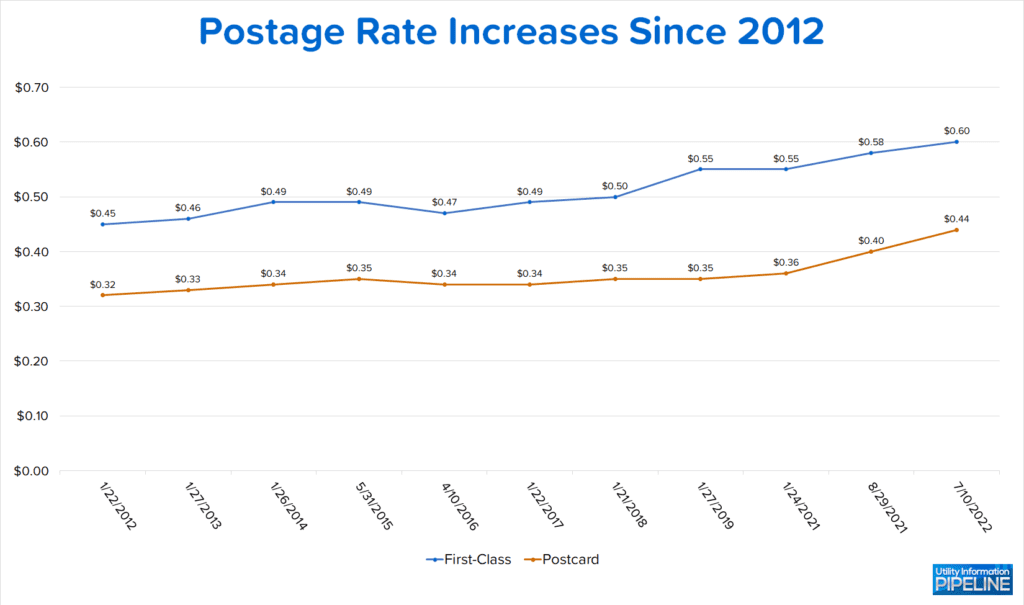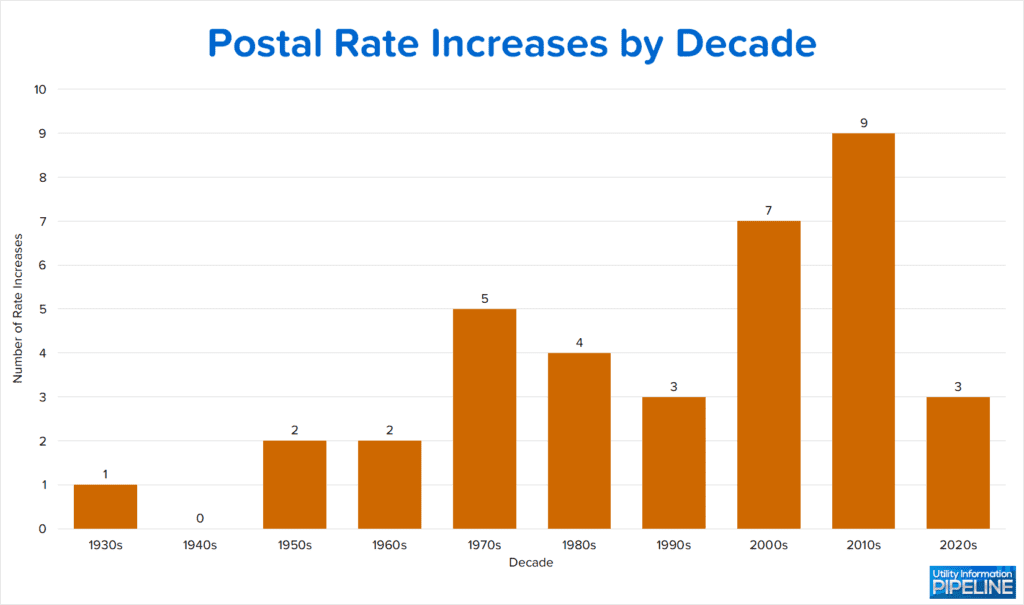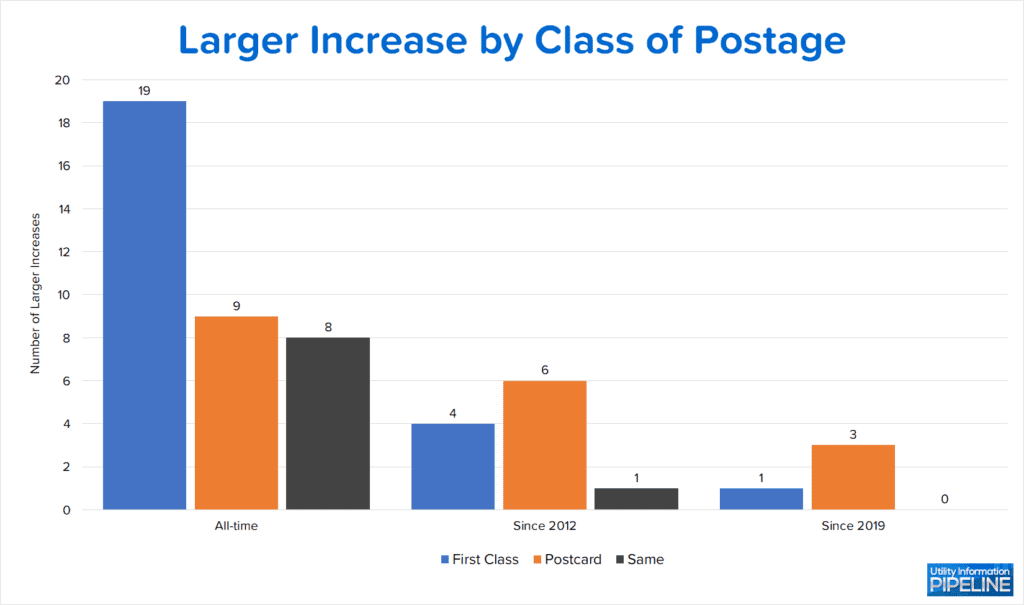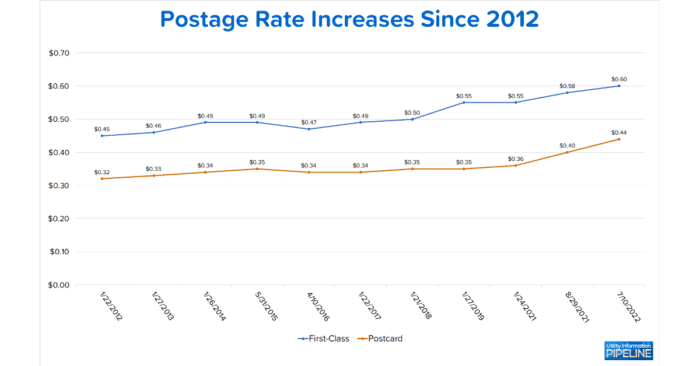A couple of months ago I wrote about delivery delays the Postal Service recently implemented. Unfortunately, longer delivery times aren’t the only bad news coming from the Postal Service – they recently raised rates for the second time in a year.
Using data from Wikipedia, I put together a table of postage rate increases since 1928, which is when both first-class and postcard rates were their lowest. This table includes the date of the increase, the new rates for each class, the amount of increase (or decrease) for each class, and which class incurred the larger increase. You can view the table by clicking here.
Below is a graph of both first-class and postcard rates over the last ten years (clicking on any of the graphs will open a larger image in a new window):

Postage will continue to increase
My earliest memories – and I’m giving away my age here! – of stamp prices were when it cost five cents to mail a letter and four cents for a postcard. And those prices remained in effect for five years before they were raised!
This was back in the 1960s when there were only two rate increases for the entire decade. That hasn’t been the case since then, as postage rate changes have increased dramatically over the decades since then. In fact, we’ve already had more rate increases in the less than three years of this decade than we did in either the 50s or 60s:

And, if all this isn’t enough, according to this article, we should be prepared for two postage rate increases next year!
Postcard rates are outpacing First-Class
Historically, first-class postage rates have increased more than postcard rates. Since 1928, by better than a 2-to-1 margin, first-class increases outpaced postcards. However, since 2019, postcard increases have eclipsed first-class increases by a 3-to-1 margin, as shown below:

Interestingly, over the last ten years, first-class postage has increased by 33.3% and postcards by 37.5%. However, since 2019, first-class has increased by only 9.1% while postcards have increased by 25.7%
What does this mean for your utility?
I think it’s pretty clear that postage rates are going to continue to increase, probably at a more dramatic pace than they have in the past. This means a larger portion of your budget must be allocated to postage each year.
The trends seem to indicate that postcards have fallen out of favor with the Postal Service and may soon cost as much as first-class postage. So, if you’re still mailing postcard utility bills, now would be a good time to consider moving to a full-page bill.
If your billing software vendor or outsource vendor offers ebilling, take advantage of it. At the same time, encourage your customers to opt out of receiving paper bills. If you are currently printing bills in-house and are interested in finding out how you could move to outsourcing for no additional cost, check out my Outsourcing Calculator.
Finally, if you have customers complaining about mail delays, offer them options. Opting in to ebilling completely eliminates any delay in receiving their bill. If their complaint is how long it took you to receive their mail payment, use this as an opportunity to sign them up for bank drafts or recurring credit card payments. Any time you can defuse an irate customer with a simple quick fix, you’ve achieved a win-win solution!
How has the mail impacted your utility?
Is your utility has been adversely impacted by either slower delivery times or increasing postage rates, please give call me at 919-673-4050 or email me at gary@utilityinformationpipeline.com to learn how a business review could help you find ways to improve.
2022 Utility Staffing Survey
There’s still time to complete the 2022 Utility Staffing Survey, if you haven’t already participated.
If you’d like to complete the 2022 Utility Staffing Survey, please click here. This should only take a few minutes to complete and I will publish the results in future newsletters.
Thank you in advance for taking the time to complete the survey and please feel free to share it with your peers at other utilities.

© 2022 Gary Sanders
